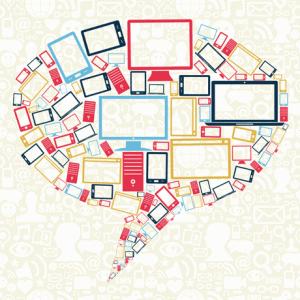Technology, as defined by Merriam Webster, is the practical application of knowledge especially in a particular area. This definition can be expanded to include a collection of techniques, skills, methods, and processes used in the accomplishment of objectives such as scientific investigations. When we add the definition for Educational Technology we get the study and ethical practice of facilitating learning and improving performance by creating, using, and managing appropriate technological processes and resources (Richey).
The most important idea that strikes me about technology is the application of skills and knowledge for a specific purpose such as scientific investigations. Jonassen notes that “students learn from thinking in meaningful ways. Thinking is engaged by activities which can be fostered by computers or teachers”. He supports this with Mindtools, which are computer applications that require students to think in meaningful ways in order to use the applications to represent what they know. Dede notes that emerging and interactive media are tools in service of richer curricula, enhanced pedagogies, and stronger links between schools and society.
 As for my own definition, I would emphasize the idea that the technology is a tool to transform and transmit our learning. Technology is a tool, the effectiveness of a tool is not absolute, but is dependent upon how it is applied and new users may find novel uses for a particular tool. Technology is much bigger and more complex than a single device or site. The key driver in using technology in the classroom should be learning goals and how the technology can be used to achieve that goal. It does not have to appear in every lesson or unit, but should be strategically utilized to maximize the effectiveness of the tool, and student learning for the specific subject at hand. In science this may mean using a big screen and projector for a virtual visit to an archaeological site, or allowing students to manipulate tools to participate in a virtual dissection of a frog. It also might mean having technology readily available for students to create or find uses to enhance their learning while it is relevant to the moment. Technology should be like oxygen, ubiquitous, necessary, and invisible (Chris Lehmann). It should not be an addition to the learning, but an integral part of it, much like our pencil and paper.
As for my own definition, I would emphasize the idea that the technology is a tool to transform and transmit our learning. Technology is a tool, the effectiveness of a tool is not absolute, but is dependent upon how it is applied and new users may find novel uses for a particular tool. Technology is much bigger and more complex than a single device or site. The key driver in using technology in the classroom should be learning goals and how the technology can be used to achieve that goal. It does not have to appear in every lesson or unit, but should be strategically utilized to maximize the effectiveness of the tool, and student learning for the specific subject at hand. In science this may mean using a big screen and projector for a virtual visit to an archaeological site, or allowing students to manipulate tools to participate in a virtual dissection of a frog. It also might mean having technology readily available for students to create or find uses to enhance their learning while it is relevant to the moment. Technology should be like oxygen, ubiquitous, necessary, and invisible (Chris Lehmann). It should not be an addition to the learning, but an integral part of it, much like our pencil and paper.
Anne
References
Jonassen, D. H. (2000). Computers as mindtools for schools, 2nd Ed. Upper Saddle River, NJ: Merrill/ Prentice Hall. Retrieved from Google Scholar: http://scholar.google.com/scholar?q=Jonassen+mindtools&ie=UTF-8&oe=UTF-8&hl=en&btnG=Search
Kozma, R. (2003). Technology, innovation, and educational change: A global perspective, (A report of the Second Information Technology in Education Study, Module 2). Eugene, OR: International Association for the Evaluation of Educational Achievement, ISTE Publications.
Levinson, M. (2013, May 29). Technology in schools: Defining the terms. Retrieved January 28, 2017, from https://www.edutopia.org/blog/tech-in-schools-defining-terms-matt-levinson
Richey, R. C., & Klein, J. D. (2005). Developmental research methods: Creating knowledge from instructional design and development practice. Journal of Computing in Higher Education, 16(2), 23-38. doi:10.1007/bf02961473
Roblyer, M.D. & Doering, A. (2012). Integrating educational technology into teaching, (5th Ed.). Upper Saddle River, New Jersey: Prentice Hall.